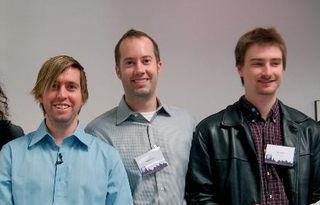
By Nils Magnus
On January 18, about 200 KDE developers, open source supporters, and journalists gathered in Mountain View, California, to attend the official introduction of the new KDE released the previous week. During his live streaming keynote broadcast to release parties across the globe, project manager Aaron Seigo highlighted the most important new features in KDE. Later, other developers described additional improvements in the free desktop during the three-day meeting accompanying the release.
On the heavily guarded Google Campus in Mountain View, where journalists were not allowed to take pictures within the building, Seigo explained the desktop design goals that have been planned up to 10 years in advance, and he outlined three focuses that guide product development. First, the external product presentation should be pleasing, modern, and speak to the emotions of the user. As a part of the Oxygen sub-project, more than a thousand icons were reformatted into the freely scalable standardized SVG format.
Making the software as accessible as possible was the second objective. According to Seigo, this goal extends far beyond the features installed for disabled users, including the freely scalable magnifying glass, localization of more than 60 languages, and availability for different hardware platforms - from telephones to mini-PCs and proprietary operating systems.
The third emphasis was on new functions that reach across numerous applications, including the new viewer, Okular, which is able to display several-dozen file formats and fill in forms. Users can take advantage of DRM functions, but the admin can disable them. Many functions are available to all applications, including the extended search function, Nepomuk, and the multi-lingual correction function, Sonnet.
Seigo seemed satisfied with current developments and considers many other interfaces outdated in terms of their technology. "Version 4.0 is only the beginning," he said, as he continued to sketch out the continued roadmap.
According to members of the KDE release team, developers plan a bi-annual release cycle. Version 4.1 is expected in July and will have a broader scope of users in mind. "A change in such a short period of time was not conceivable before the release of KDE 4.0," said Will Stephenson, KDE developer. "The current decision after the major release will, however, introduce greater discipline into the development process." KDE developer Sebastian Kügler offers more details in his blog and says there will be monthly bug fixes for KDE 4.0. Kügler says version 4.1 will be based on Qt 4.4, and then KDE 4.2 should be out in January 2009.
As a part of the release event, the CEO of Trolltech, Havaard Nord, announced that the Qt library would be put under the GPLv3. Qt is an important foundation for the Linux desktop KDE. Whether this action had anything to do with the takeover by Nokia announced a week later is only speculation. Nord also outlined the symbiotic relationship between his company and the free project, touching on concerns brought up by critics of this model. The CEO referred to the 11 years of good mutual cooperation, saying that mutual trust is the basis of their success. The complete Qt for Linux, which Trolltech sold under the GPLv2 or a proprietary license, would be made available in the future under the updated version of the license issued by the Free Software Foundation.
Looking back at the two-year development phase, the KDE community appears to be optimistic and strengthened. To emphasize the growing importance of KDE in the Americas, developers agreed to switch upcoming meetings between the Academy in Europe and venues in the Americas every six months.